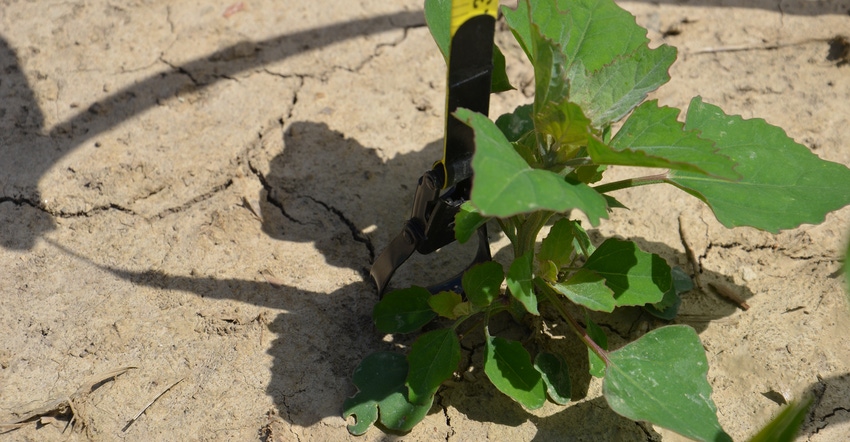
If a herbicide label says weeds must be 8 inches or smaller for the active ingredient to work, it means 8 inches is the maximum weed height. That’s the message from Bill Johnson, a Purdue University Extension weed control specialist.
“Once certain weeds get taller than 8 inches, even with dicamba products in dicamba-tolerant soybeans, all bets are off,” Johnson says.
The same is true with glyphosate, he says. If the label says maximum weed height is 8 inches, you’re on your own once weeds get taller than that, he observes.
One of the problems in getting good control is judging weed height accurately, Johnson says. Weeds often look smaller than they really are, and once conditions are right, grow faster than you expect. Be sure you know the height of weeds you’re after. Here are three measurement methods that work.
1. Carry a tape measure and take time to use it. It’s not uncommon to think a weed is only 4 or 5 inches tall when it’s really 6 or 7 inches tall. A couple of inches of height difference can be a big deal depending on the weed and postemergence product you’re using, Johnson says.
2. Size up weeds with a soda can. Most 12-ounce beverage cans are about 4 inches tall, Johnson observes. Set the can by the weed. If it’s taller than the can and the herbicide label limit is 4-inch weeds, you may have a problem.
3. Use the shoe method. OK, weeds are taller than a soda can, but you’ve got a herbicide that gets weeds up to 12 inches tall. If you wear a size 12 shoe, stick your toe in the ground and lift up your heel against the weed. If the weed is taller than your shoe, all bets are off again, Johnson concludes.
About the Author(s)
You May Also Like




